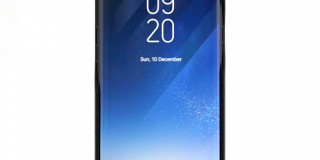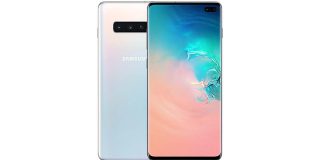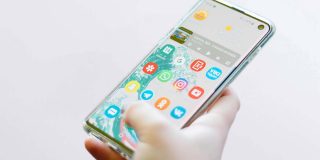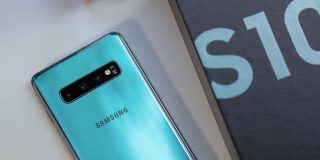How To Fix Bluetooth Pairing Problems On Galaxy S8 And Galaxy S8 Plus
Many people use the Bluetooth on their Samsung Galaxy S8 or Galaxy S8 Plus without ever wondering what this feature is and how it works. Questions arise, though, as soon as the Bluetooth starts to manifest pairing problems and users are eager to fix it on their own. After all, being able to transfer data wirelessly, between the smartphone and any other device it can connect to, headphones, speakers, media player included, is one of the coolest Android features.
Now that we have all agreed that the Bluetooth connectivity is amazing as long as it works, let’s shift the focus a little bit towards the negative side – what can you do when you cannot seem to pair your device with any other device?
If the device that you cannot connect to your Galaxy phone is used for the first time, you will have to consider whether it matches the required Bluetooth profile. This profile is nothing but a common language that devices understand and use to communicate with each other.
To give you a better sense of the whole Bluetooth profile idea, think about connecting your computer keyboard to your phone’s camera… You can’t, right? That’s because the latter cannot support the Human Interface Device Profile. On the other hand, you can pair your smartphone with a headset, a wireless model, since both support the Hands-Free Profile.
Now, assuming you have been able to connect this device to your Samsung Galaxy S8 or Galaxy S8 Plus before but it stopped working all of a sudden, it is possible that you’re dealing with a user error. And for such circumstances, we have put together no less than 12 different troubleshooting alternatives!
Take your time and read this guide on how to fix Galaxy S8 and Galaxy S8 Plus Bluetooth pairing problems – you never know when you’re going need it or if the right solution for your particular situation is precisely our tip number 12…
Step 1 – Check the Bluetooth status
Have you forgotten to turn it on? Was it accidentally turned off? Better to be safe than sorry, so look for the Bluetooth symbol from the top of the device’s screen. If it’s not there, go to Settings and activate it.
Step 2 – Check the User Guide for the pairing process
Are you using the wrong pairing process? Maybe the two devices aren’t supposed to connect by simply physically touching them and you actually have to type a code on your smartphone to enable the connection. Even the Bose SoundLink has its special secret, requiring you to hold down a speaker button so you can pair it with the phone.
Of course, you don’t have to know by heart these processes, but you can always check the User Guide for each of the involved devices and find out how you should connect them.
Step 3 – Activate the Discoverable Mode
Sometimes, like when you want to pair your Galaxy S8 with the infotainment system built-in with your car, you need to activate the Discoverable Mode on the phone. Before you can use hands-free navigation, texting or calling, you must activate the Bluetooth on the phone and have the car’s infotainment system scan for nearby Bluetooth devices.
Once your phone is detected, you could be asked for a numeric code that will officially pair the two devices. Just remember that you have to act fast because this mode will deactivate by itself within a couple of minutes.
Step 4 – Check the distance between devices
It makes common sense that any two devices that you’re trying to connect via Bluetooth should be standing within approximately five feet distance. If you got too excited and forgot about that, make sure you bring them closer together.
Step 5 – Turn off and then back on both devices
This is a soft reset, a very simple trick that can often work wonders. So, grab each device and turn it off, let it sit like that for a couple of seconds or a minute, and then turn it back on. A great alternative, for the smartphone, is to activate and deactivate the Airplane Mode.
Step 6 – Try to spot and remove any interferers
It could be that the device is actually connecting to another smartphone from the nearby instead of your phone. Also, if you can’t make it with the speaker, it could be the speaker’s attempt to follow its usual connection. Long story short, remove any other Bluetooth device from the nearby and particularly the last devices that were connected to it.
Step 7 – Check the battery level
Smart power management can be a pain in this particular situation if any of the two parties involved has a low battery level. Go ahead, charge them both and try again.
Step 8 – Delete the device and reinitiate the connection
In the event that your Samsung Galaxy S8 can see the device that you’re trying to connect to but, for whatever reasons, it cannot establish a connection with it, delete the data and start all over again.
- On iOS just tap on the device’s name and select the option labeled as Forget the Device.
- On Android tap on its name and hit the Unpair button.
Now go back to the first step in our tutorial and see how it goes.
Step 9 – Remove the Wi-Fi distraction
It has often been reported that the Wi-Fi can interfere with the Bluetooth, preventing the Bluetooth functionality. So, it is best to stay away from the range of any Wi-Fi router while trying the connection.
Step 10 – Check the devices’ profile
Not all devices can connect with all devices even when they all support the Bluetooth connectivity. To test any compatibility issues, you will have to go, once again, to the user manual.
Step 11 – Check the drivers
If your problem is actually with a computer, chances are that you are not using the right driver. Take some time to do a little online research, by typing in the device’s name + driver and see what results you will get.
Step 12 – Perform a hardware firmware update
This is the last frontier that you can try to solve the Bluetooth pairing problem on Galaxy S8 or Galaxy S8 Plus. The Bluetooth 4.0 version, for instance, had well-known connectivity issues on numerous car audio systems that couldn’t connect with smartphones because of this firmware incompatibility. Again, take a look at the manufacturer’s indications for each device and find out how to install a firmware update.
















